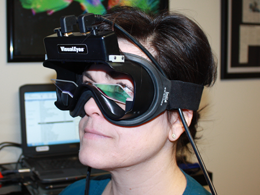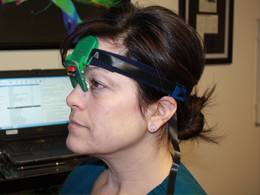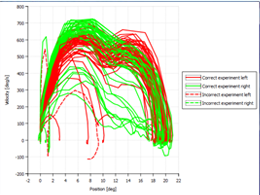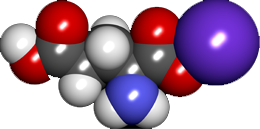Migraines & Chronic Headaches
- Essentially we reduce/eliminate a patient’s metabolic headache triggers while simultaneously using specific/individualized drug free Functional Neurological stimulations and biomechanical therapies to improve brain function and raise the patient’s threshold to having a migraine.
- When a patient’s neurological threshold is high, their metabolic health is optimized and their triggers reduced, the chance of migraine goes down substantially.
For a more detailed explanation, read the following key points to our migraine care program:
We do not treat with medications for 2 main reasons:
1. Medications can cause rebound headaches. When you have a migraine headache you want to get rid of it as fast as you can. We certainly don’t fault you for that. If you’re like most headache sufferers you rely on some type of painkiller. If you use them sparingly they can be helpful but if you take them too frequently they can cause REBOUND HEADACHES. One of the big problems when trying to help a headache sufferer that is taking daily or weekly painkillers is determining how many of their headaches are primary verses the medicine induced rebounders.
Many of the common rebounding headache medications work by constricting blood vessels in your head that become swollen when a migraine is occurring. The medications temporarily constrict the vessels to provide relief but just as the old saying goes: “what comes up must come down”, when the medications wear off the vessel can swell even further than it was before. This is the re-vasodilation that causes rebound headaches.
As we improve a person’s neurologic and metabolic health through our care we can increase their threshold to migraine reducing their need for medication and breaking the rebound cycle.
2. Medications have side effects and affect the brain globally as a whole and are not specific or able to bias certain neurological areas. Therefore, it is not possible for a chemical to only affect the specific areas of the brain causing a person’s migraine. For example, if only the left side of a person’s brain stem is affected (causing their headaches), how could the chemical action of the medication only affect one side and not the other?
It is for that reason we do not use medication and instead use specific brain stimulations to train and improve the function of the specific areas affected. When these areas of the brain improve then a person’s threshold to when they get a migraine is increased reducing headaches.
In order to better understand this methodology it’s important to understand how a Functional Neurologist differs from conventional medical neurologist. The key difference between a Functional Neurologist and a conventional medical neurologist lies primarily in their approaches to treatment.
A conventional medical neurologist is typically focused on the diagnosis of structural pathology and utilizes only pharmaceutical and surgical interventions to treat disease.
A Functional Neurologist views the nervous system as a moldable, changeable entity that can be affected in its function through virtually unlimited types of environmental stimulation and specific therapies. This concept of the brain being able to change its function throughout life via environmental stimulation is termed neuroplasticity and is at the very core of a Functional Neurologist’s clinical methodology.
It is important to understand that going to your primary medical doctor for brain imaging is a good idea to rule out a structural pathological cause of your migraine headaches such as, tumor, stroke, or other disease process. However, when your migraine disorder is not caused by structural pathology and you are not responding to medicine it is time to look elsewhere. The cause is then a functional problem requiring a functional neurological approach.
Much of the current research on migraine headaches points to what is known as autonomic nervous system dysfunction. The autonomic nervous system is the part of your nervous system that controls all of your internal organ and gland function but most importantly and related to migraine is its control of your brains blood flow.
The location of the control center for the autonomic nervous system lies in the brain stem and also an area of the brain known as the hypothalamus. Blood vessels in the brain and its coverings are wired up to an area in the brain stem known as the trigeminal nucleus. The trigeminal nucleus stretches from the brain stem down into your neck and it receives pain sensations from the vessels in the brain. When this trigeminal area and its neighbors in the brain stem are not functioning optimally they can become unstable gradually drifting closer to threshold making the pain pathways more sensitive.
This will lower your brain’s threshold to migraine triggers (foods, inflammation, stress, lack of sleep, alcohol, dehydration to name a few) making you more susceptible to migraine. As this area becomes more unstable pain neurons begin to fire more easily. This is called central sensitization. Signals from the brain stem and upper neck nerves affect blood vessels in your head, face and neck causing them to become swollen and inflamed causing pain. The trigeminal nucleus also will fire in a wave-like pattern to higher brain centers causing throbbing pain.
Higher brain centers have an ability to reduce or inhibit this cascade of events but when those areas are not working well this function is lost lowering your threshold to migraine.
The good news is there are Specific Functional Neurological Based stimulations or therapies that can be done to improve and stabilize the long term function of higher brain centers as well as the brain stem and autonomic nervous system to help your migraine headaches.
Our specific neurological exam will pinpoint areas of your brain that may not be functioning optimally. We also look at each specific brain region that may be causing a person’s migraine in addition to the individual’s specific functional capabilities and metabolic health as well. This is different than just prescribing medications to mask the symptoms and not looking at each individual patient from a functional model.
Video Nystagmography VNG
The advanced neurological testing procedures listed below allow us to pinpoint brain impairments that may be responsible for your migraines
VNG is a computerized system used in the assessment of the oculomotor system (nervous system control of eye movement) and the function of those areas of your brain controlling these movements.
The VNG test is comfortably performed in our office. We simply place special goggles with an infrared camera on your head to record and measure your eye movements in both light and dark conditions.
Specific areas and pathways of the brain are activated during different types of eye movements. Many of the eye movement areas of the brain are located in the brain stem close to the area of dysfunction in migraines.
During the test, computer software is recording and graphing your precise eye movements as you follow the visual target with your eyes. By measuring your recorded eye movements and displaying them on the computer screen, you can see your own eye movements and how they compare to normal measurements.
The following eye movements are measured by VNG:
- Gaze Stability: It is essential that the brain stabilizes the gaze of the eyes for proper equilibrium and balance. One of the most common ocular motor deficiencies seen in neurological disorders is poor gaze stability. This can be seen on the VNG tracing.
- Pursuits: Pursuits are slow and steady eye movements that allow you to track a moving object. Good (smooth) pursuits are essential to everyday functions. The pursuit mechanism is commonly altered in patients that have neurological conditions.
- Saccades: Saccades are fast eye movements used to shift a person’s gaze from one object to another. Saccades need to be fast and accurate. Sub-optimal brain function can alter the speed and accuracy of a person’s saccades.
- Optokinetics (OPK): Saccades are fast eye movements used to shift a person’s gaze from one object to another. Saccades need to be fast and accurate. Sub-optimal brain function can alter the speed and accuracy of a person’s saccades.
The VNG eye movement tracings provide invaluable neurologic information concerning specific areas of your brain affected. We are experts at analysing these specific eye movements and determining if they have been disrupted in their proper function. We correlate the VNG findings with our other testing and examination procedures to develop a specific therapeutic program for each individual.
Saccadometry
We measure your saccades using saccadometry. Saccades are quick movements of your eyes that allow you to voluntarily move your eyes quickly from one object to another or to react by moving your eyes to a suddenly appearing target reflexively. Saccades can be measured using a device called a saccadometer. The saccadometer is strapped around a patient’s head using an elastic headband. Within the unit, there is a laser that projects targets onto the wall that a patient will look at quickly or saccade to. The saccadometer will measure the eye movements at the same time.
Studies have shown this test to be a very accurate way to detect brain dysfunction caused by injury or neurological disorders. This test cannot be altered voluntarily by the patient because you cannot consciously control the speed of your eye movement during each saccade; your eyes move as fast as they can. The purpose of your saccadic eye movement is to aim the part of your eye with the best vision (fovea) at the thing you want to see most, and then hold your eye there as you examine it.
Saccades are the only human physiological function that uses every area of the brain. It is for this reason that we can evaluate a person’s saccades to determine what areas of the brain are not functioning up to par.
Some of the brain areas you use in controlling saccades involves three main cortical areas: the frontal eye fields, the parietal eye fields, and the supplementary eye fields; and several subcortical areas in the basal ganglia, thalamus and brainstem.
Saccadometry very precisely measures these aspects of saccades:
- Latency: This is the reaction time taken for the saccade to fire or activate after a new stimulus or target is presented. A normal reaction time should be less than 200ms. People who have had a concussion or suffer from neurodegenerative disorders such as Alzheimer’s and Parkinson’s disease have pathologically long saccadic latency times that are greater than 200ms.
- Velocity: The speed of a saccade is highly related to health of areas in the brain stem commonly affected in neurological disorders.
 Accuracy: The ability to make the eyes stop and land directly on the target they are saccading to or looking toward is essential to a person functioning in their environment accurately. If the saccade overshoots or undershoots the target it may indicate that the cerebellum or the area of the brain that makes the environmental grid may have been affected by injury or neurological disorders. The saccadometer computerized graph shows leftward saccades that are generated by the right brain hemisphere as red and the rightward saccades that are generated by the left brain as green. This can be very useful in determining what side of the brain is most affected.
Accuracy: The ability to make the eyes stop and land directly on the target they are saccading to or looking toward is essential to a person functioning in their environment accurately. If the saccade overshoots or undershoots the target it may indicate that the cerebellum or the area of the brain that makes the environmental grid may have been affected by injury or neurological disorders. The saccadometer computerized graph shows leftward saccades that are generated by the right brain hemisphere as red and the rightward saccades that are generated by the left brain as green. This can be very useful in determining what side of the brain is most affected.
 The neurological therapies or brain stimulations we use are specific and unique for each individual. These therapies are determined by the neurological consultation, the neurological examination and advanced neurological computerized testing. These therapies help restore impaired function by using the concepts of neuroplasticity and the brain’s inherent ability to repair itself. The therapies target affected areas with specific activities to rebuild neural pathways. These stimulations are aimed at stabilizing brain stem nuclei and the autonomic nervous system to increase a person’s threshold and break the vicious cycle of migraine.
The neurological therapies or brain stimulations we use are specific and unique for each individual. These therapies are determined by the neurological consultation, the neurological examination and advanced neurological computerized testing. These therapies help restore impaired function by using the concepts of neuroplasticity and the brain’s inherent ability to repair itself. The therapies target affected areas with specific activities to rebuild neural pathways. These stimulations are aimed at stabilizing brain stem nuclei and the autonomic nervous system to increase a person’s threshold and break the vicious cycle of migraine.
Therapy regimens may include:
- Oxygen Therapy
- Specific eye exercises: to affect and improve brain areas associated with a migraine.
- SSEP: somatosensory evoked potential to the tongue as well as face: to increase the stability of brain stem networks
- Insufflation therapy- gentle stimulation of the inner ear to stimulate brain stem nuclei
- Vibration Therapy- to stimulate the cerebellum
- Proprioceptive stimulation- Joint stimulation to affect the brain.
- Vestibular stimulation- inner ear stimulation
- Balance Therapy
- Advanced muscle retraining
- Interactive metronome
- EYELIGHTS
- Optokinetics
- HemiStim Programs
- Corrective Chiropractic Care
- Spinal Decompression Therapy
Spinal joint dysfunction may further impair brain function, when the nerves in the neck that fire back to the brain are not working well. If necessary, spinal therapies may include:
- Non-Surgical Spinal Decompression: NSSD creates a negative disc pressure and helps to reduce pressure on the nerves. It also provides a slow stretch of the muscles which fires up the spinal cord to increase firing of the brain.
- ATM2 (Active Therapeutic Movement): For patients who have back, neck and/ or hip pain when bending or twisting. Your body has a protective mechanism that prevents damaged tissue from being damaged further. Pain prevents you from moving the damaged tissue into an unsafe position. If the spine is unstable, that defense mechanism will remain even when the damaged tissue is healed.
- Laser/Light Therapy:
– Increases Circulation and Angiogenesis
– Reduces or Eliminates Acute and Chronic Pain
– Reduces Inflammation and Swelling
– Stimulates and Improves Nerve Function
– Strengthens and Repairs Bone and Soft Tissue
– Increases Mobility and Muscle Function - Biomechanical Chiropractic care and Core Stability Exercises: To correct a poorly aligned spine and to strengthen the muscles that support the structure of the spine.
 There are specific dietary recommendations and nutritional compounds that can reduce brain inflammation and make a better environment for brain function. We combine these evidence-based, drug-free dietary recommendations and nutritional supplements with our specific brain therapies to achieve maximal benefit for our migraine patients.
There are specific dietary recommendations and nutritional compounds that can reduce brain inflammation and make a better environment for brain function. We combine these evidence-based, drug-free dietary recommendations and nutritional supplements with our specific brain therapies to achieve maximal benefit for our migraine patients.
We base a patient’s specific nutritional needs on their preliminary lab results. The following are some of the lab tests we may run to determine the best nutritional approach each individual patient will need:
Preliminary Lab Testing
The effects migraine can be compounded by the person’s metabolic health.
- A Complete Metabolic Panel (CMP)
- A Lipid and Thyroid Panel
- A CBC (Complete Blood Chemistry with Auto Differential)
- Vitamin and Mineral Testing (Vit D, B12, Calcium, phosphorus etc)
- Inflammation Testing: We test for Inflammation in your system by testing Homocysteine Levels and C – reactive protein (CRP).
- Iron and Ferritin Testing For Anemia
We can assess your thyroid, adrenal, immune, blood and gut function. All can be affecting your brain health. By addressing any problems with your thyroid, adrenal glands, immune system, blood chemistry or gut function, we can help your nervous system to function more properly. The complete metabolic panel allows us to check your blood glucose levels since glucose and oxygen are needed by the brain to function properly.
Special Lab Panels and Testing
 Your preliminary blood testing will let us know if any of the special testing listed below will be necessary in helping you recover from your migraines.
Your preliminary blood testing will let us know if any of the special testing listed below will be necessary in helping you recover from your migraines.
- Cyrex array 2-Intestinal permeability (Leaky gut testing)
Many migraine patients, especially those with an auto-immune issues have a microscopic breakdown of their intestinal wall known as intestinal permeability. This breakdown, called leaky gut, will cause the small intestines and colon to become inflamed as well as allow the brain to maintain its inflamed state. An inflamed gut will cause an inflamed brain. A leaky gut is also associated with driving a hypersensitive immune system that can create brain inflammation triggering migraine. The Cyrex labs specialized immune testing for intestinal permeability will determine if you have leaky gut and if so, what specific type. There are 3 types of leaky gut, each have a specific treatment approach.

The Gut-Brain Connection:
The gastrointestinal system is known as the “Second Brain” and has just as many neurons as the brain itself. Our 2 brains- the one in our head and the one in our bowel- must cooperate. When they do not, then there is chaos in the gut and misery in the head-everything from “butterflies’ to cramps, from diarrhea to constipation.
- Cyrex array 3- Advanced gluten sensitivity testing
Migraine sufferers that are also gluten sensitive may have excess gut and brain inflammation from gluten sensitivity. Food sensitivities can drive inflammation triggering migraine. - Cyrex array 4-Food sensitivity and cross reactive food testing:
Migraine sufferers may also be sensitive to multiple foods beyond gluten. This test will pinpoint what foods are causing excess gut and brain inflammation. (See CYREX Gut Brain Immune video tab on website) - Stool Microbial Ecology testing
for intestinal bacteria, yeast, parasites and dysbiosis. Eliminating intestinal inflammation will help to reduce overall body and brain inflammation. - Adrenal Stress Index (ASI)
We can further test your adrenal glands with a test called an Adrenal Stress Index. Your adrenal glands are your “stress” organs, meaning that they react to stress. If you have been or are currently under stress, this test is a must! When your body’s cortisol levels are abnormal, it is a sign that your body’s sympathetic nervous system is over-firing. Abnormal cortisol levels can be corrected via specific neurologic and nutritional protocols.
Note: Not all of the special tests are necessary for every vertigo patient. Each patient will have specific recommendations for special tests based on their initial exam findings, preliminary blood work findings and their unique set of health complaints. Preliminary blood testing will help determine if any of the special lab panels explained above will be necessary for you.
Specific Nutritional Protocols
These specific nutritional protocols are based on your neurological testing, your blood work findings and your special lab panels. Our goal is to provide the brain with the best metabolic environment to support and obtain the best results from our neurological care. These protocols are designed specifically for you and may include any of the following:
- Anti-inflammatory diet
- Specific diet and supplement protocols to decrease brain and gut inflammation.
- Liver detoxification
- Specific diet and supplement protocols to decrease brain and gut inflammation and decrease chronic pain
- Non-drug protocols for high blood sugars, diabetes, hypoglycemia and high cholesterol
- Natural protocols for hypothyroidism
- Nutritional protocols for abnormal adrenal (stress gland) function
- Specific diet and supplement protocols for autoimmunity
- Food sensitivity diet recommendations
Migraine trigger elimination diets: Many foods have been identified as migraine triggers. These foods seem to have a negative effect on the brain and its vessels. We will guide you through identifying which foods you should avoid.
